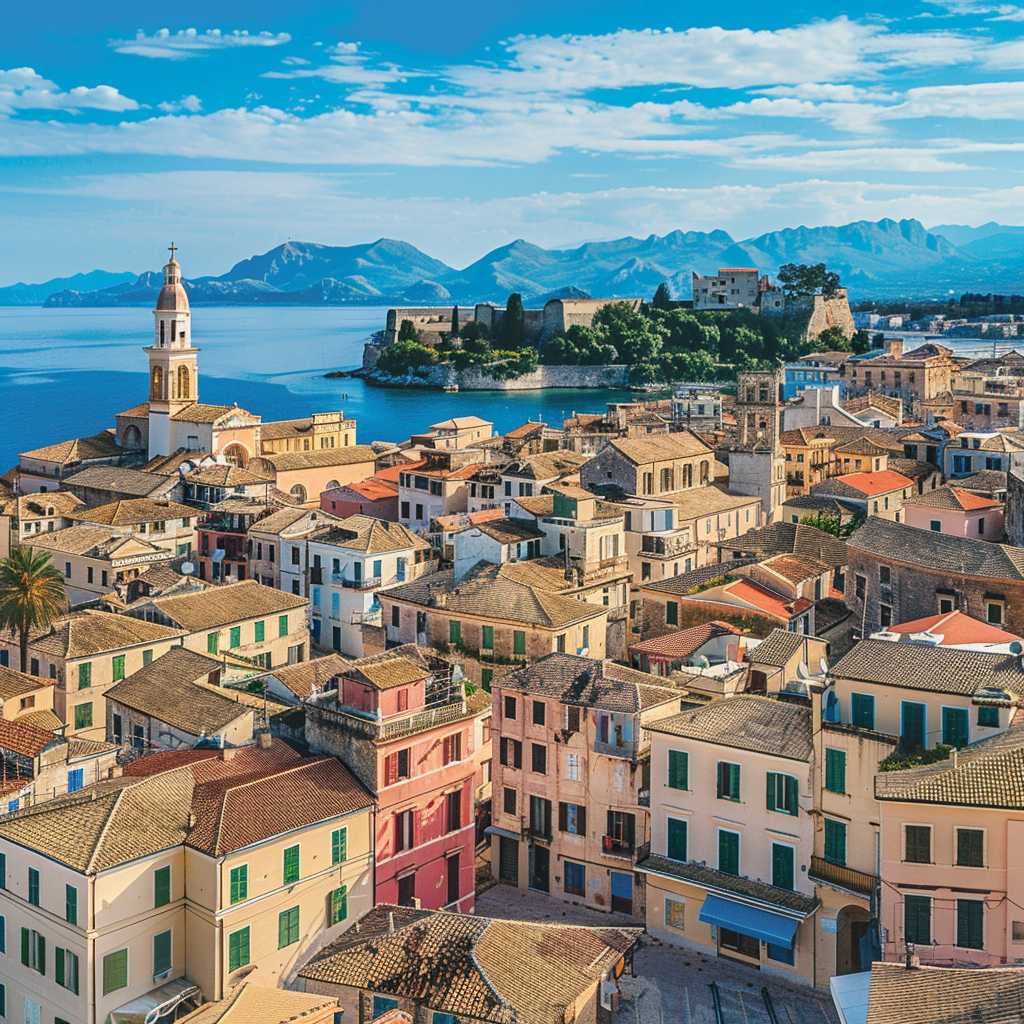The Enchanting Island of Corfu: A Blend of Natural Beauty and Cultural Riches
Corfu, known to locals as Kerkyra, is an island off Greece’s northwest coast in the Ionian Sea, and it has long been a coveted destination for travelers from around the globe. The island is notable not just for its stunning seascapes and verdant mountains, but also for its rich tapestry of cultural influences, history, and traditions. Packed with old fortresses, historical palaces, and a captivating old town designated as a UNESCO World Heritage site, Corfu stands as a testament to its varied historical epochs—a legacy of Byzantine, Venetian, French and British rule before unification with modern Greece.
Geography and Climate: The Lure of the Ionian Sea
Natural Landscape
Corfu’s geography is as unique as it is appealing. The northern part of the island is dominated by rugged mountains, while the south features rolling hills that give way to expansive stretches of olive groves, cypress trees, and wildflowers. Its coastline is a serrated mix of smooth bays and sheer cliff faces, leading to beaches both lively and secluded. Topping its natural features, two significant geophysical opuses are Mount Pantokrator, the island’s highest peak offering stunning panoramic views, and the picturesque coves that beckon to sun seekers and explorers alike.
Climate Context
The climate in Corfu is typically Mediterranean, characterised by hot, dry summers and mild, wet winters. This comfortable climate contributes significantly to the island’s appeal as an ideal year-round destination for tourists.
Historical Highlights: A Chronicle of the Past
Navigating Through Time
The rich history of Corfu can be catalogued into several significant periods. It has seen power exchanges from antiquity through the Byzantine Empire, successive dominance by the Venetians, French Revolutionary troops, Russo-Ottoman alliance, and later the British until its eventual cession to Greece in 1864.
Architectural Architectonics
Much of the historical texture of Corfu can be seen through its architecture. Venetian fortresses guard the region with awe-inspiring grandeur. French influences grace the Spianada square with arcades reminiscent of Rue de Rivoli in Paris. Similarly, Victorian-style buildings are evidence of a British era gone-by, piecing together an architectural journey through time.
Cultural Carousel: Holidays and Festivals
Religious Revelries
Much like elsewhere in Greece, religious festivals hold a special place in the heart of Corfidians. Easter celebrations on Corfu are particularly colorful and celebratory with processions, music bands, and the dramatic “pot throwing” customs on Holy Saturday.
Summertime Celebrations
In summer months, Corfu comes alive with traditional festivals fit with music, dance, and local culinary specialties. These festivals offer insight into age-old customs and afford a window into the hitherto lifestyle of local lore.
Modern Mix: Vibrant Art and Cuisine Scene
Corfu merges traditional Greek culture with modern artistic expressions. Art galleries describe narratives in color and tourists can encounter up-and-coming Greek artists whose work speaks layers about contemporary Corfu.
Culinary Quests
The multi-cultural history impacts even today’s culinary landscape. Corfiot dishes often blend Italian-Greek heritage in divine recipes; Sofrito, Pastitsada and Bourdeto are must-try local dishes flavored deeply by Mediterranean herbs.
Travel Tips: Getting There and Around
Island Access
Corfu is accessible by air from Athens International Airport or by ferry from various ports including Venice, Ancona, Bari, or Brindisi in Italy.
Navigable Notes
A robust local bus system connects major spots across the island while car hire services are convenient for more ad-hoc journeys. Exploring by ‘caïque’, small wooden boats common hereabouts enamors many a visitor seeking aquamarine caves or nearby islets.
Notes
*Image description: A panoramic view of Corfu showcasing its old Venetian fortress rising above an old town with terracotta rooftops contrasted against cobalt-blue sea water straight ahead.*
